According to Cotality (formerly CoreLogic), Australian rental affordability has never been worse, with tenants required to sacrifice a record share of their income to rent the median home.
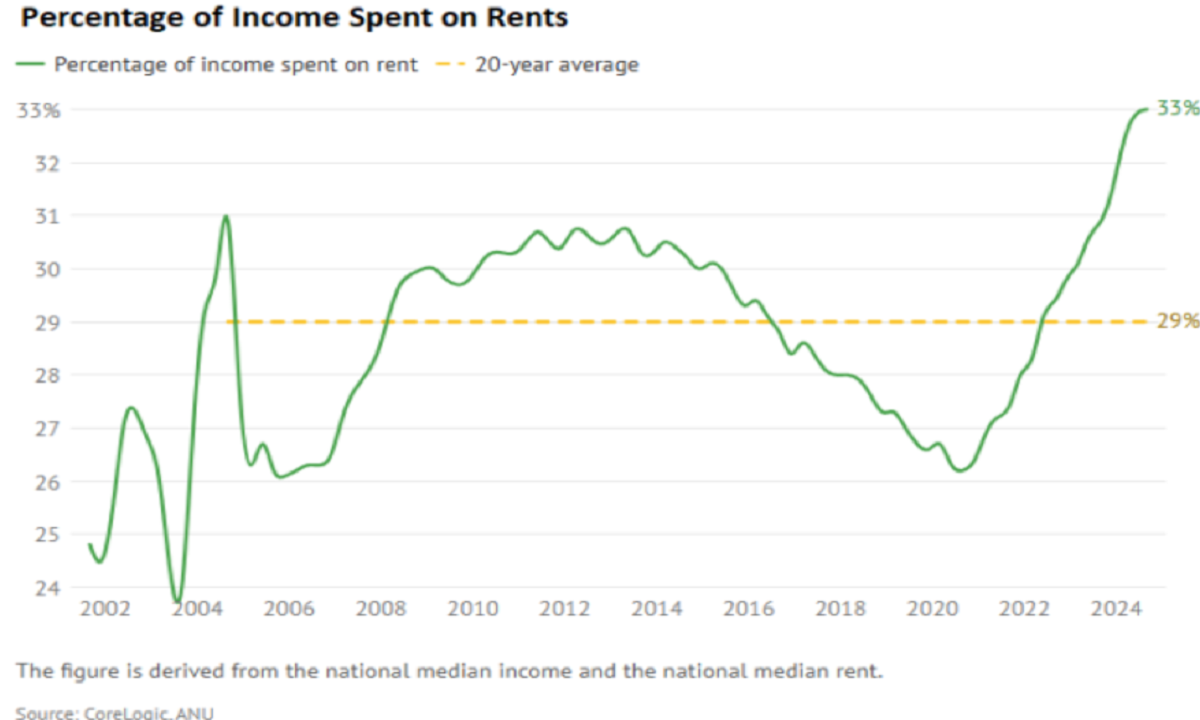
This decline in affordability follows a circa 50% increase in asking rents since the pandemic.
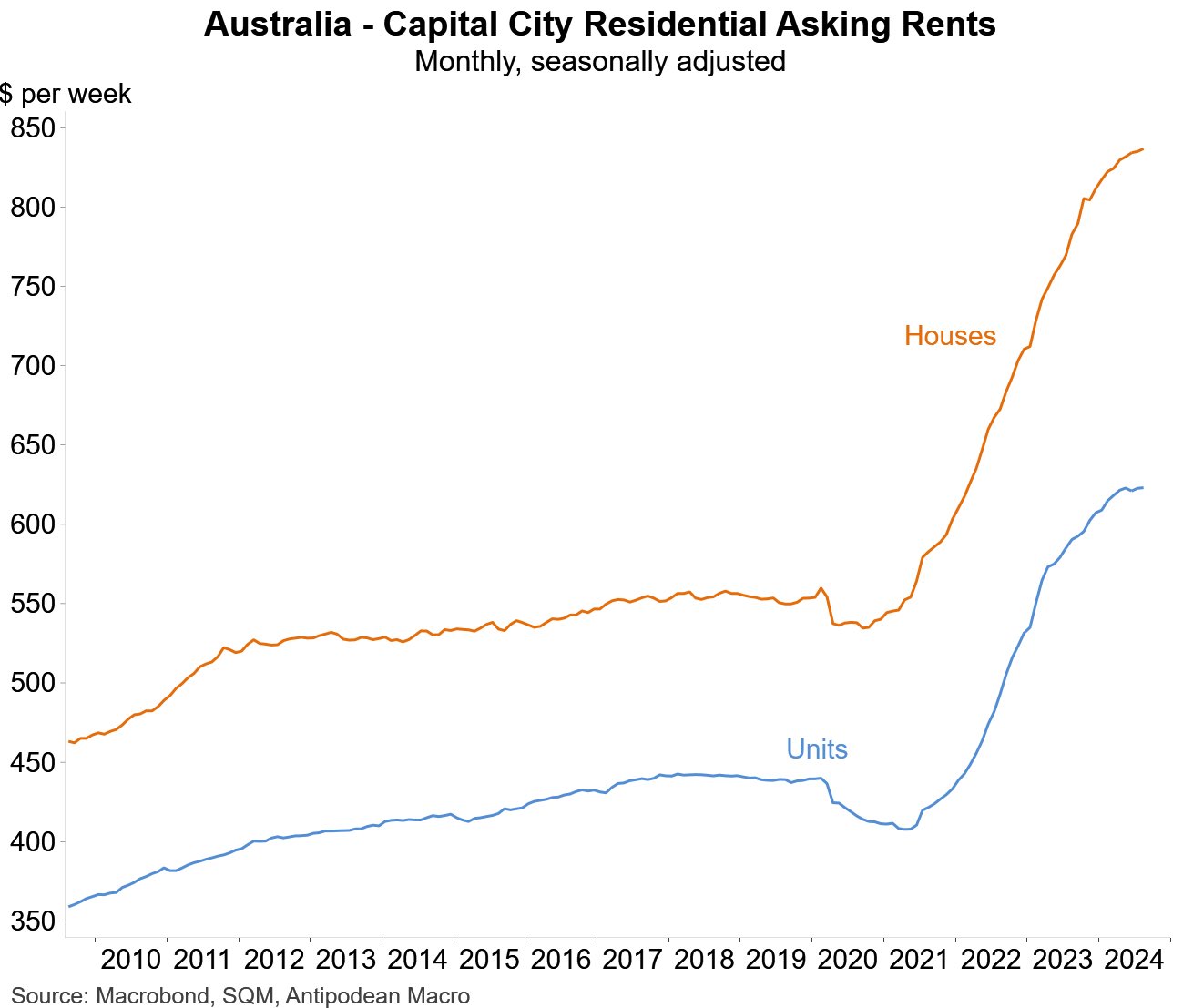
Last week, leading apartment developer Tim Gurner warned that Australia’s rental crisis could last another 15 years due to a lack of supply relative to the nation’s strong population growth.
“Even if the government came out tomorrow and changed all the planning rules, changed all the capital and debt rules, it’s not going to be fixed in three, not fixed in five, seven or 10 [years]”, Gurner told The AFR.
“We have a good five to 15 years’ worth of rental crisis coming where there’s going to be a huge amount of pressure on supply”.
“If you look at the vacancy rates, it’s pretty simple, right? We have vacancy around 1% in every single state, construction supply is the lowest it’s been in 10 years”.
“Population growth is higher than it’s ever been. So it’s very simple mathematics to see that we’ve got the biggest undersupply in history with the highest demand in history, with population growth still growing. So it’s got nothing to do with our motivations”, he said.
Immigration surges again:
Gurner’s comments came as the latest permanent and long-term arrivals and departures figures from the ABS suggested that net overseas migration has rebounded to near record highs.
Over the first quarter of 2025, 188,000 net permanent and long-term arrivals landed in Australia, slightly lower than last year’s peak of 195,000 in the first quarter of 2024.
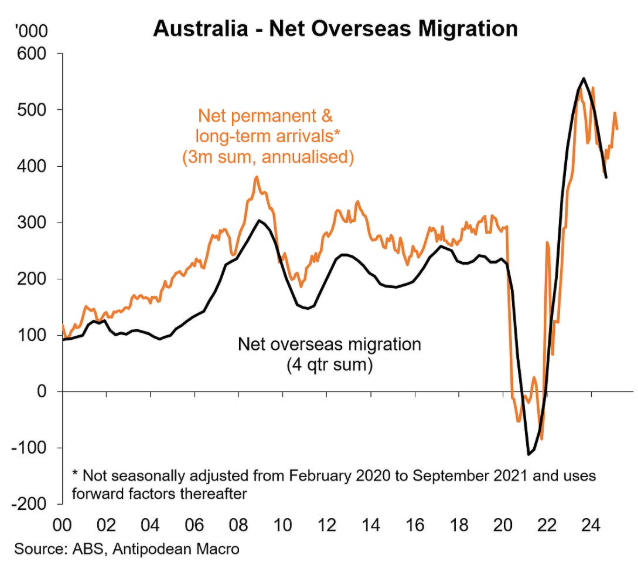
International student enrolments and graduate visas are also tracking at record levels.
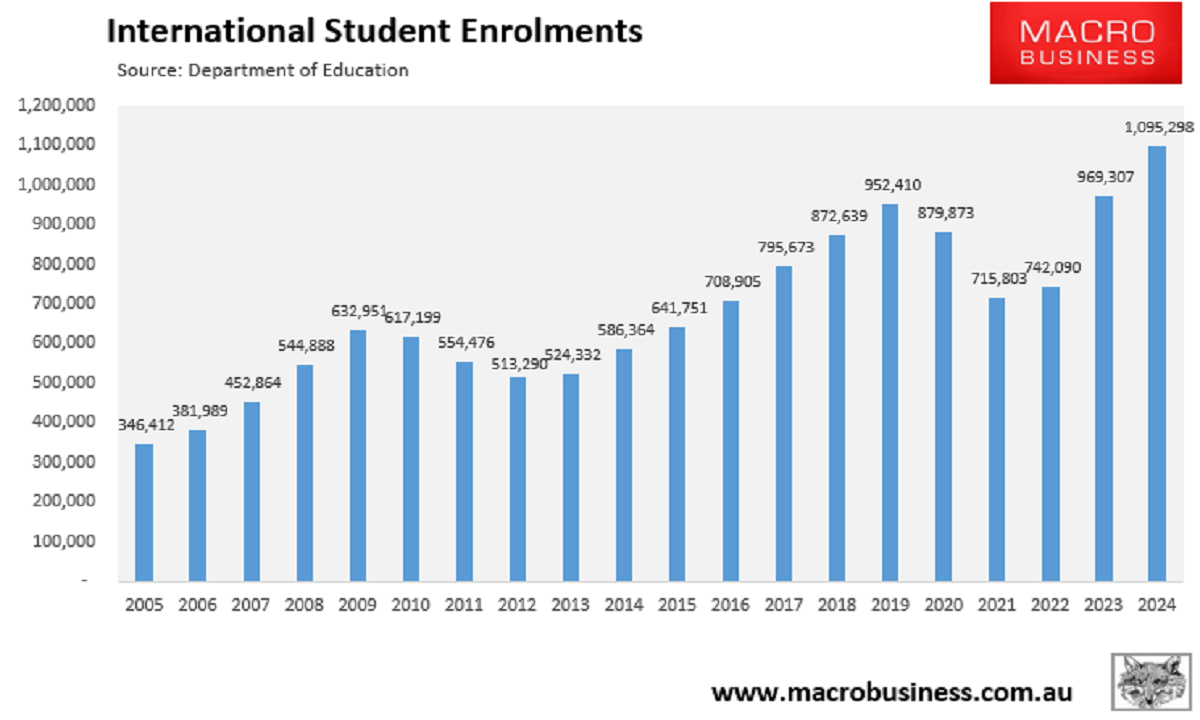
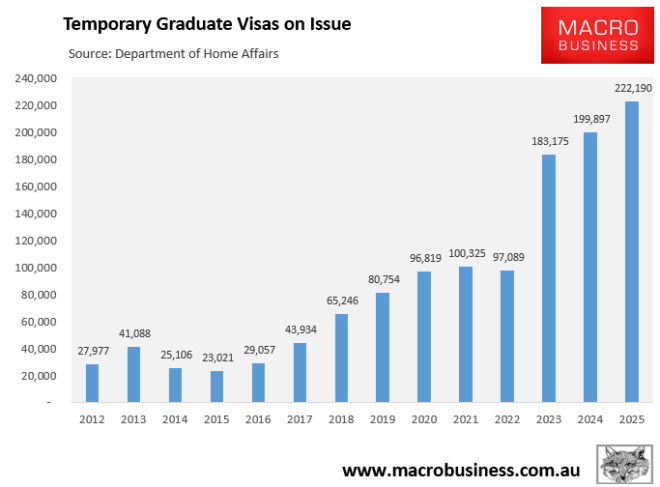
Last week’s April Labour Force release from the ABS also showed that the growth in the 15-plus civilian population accelerated over the first four months of 2025, reflecting the stronger immigration.
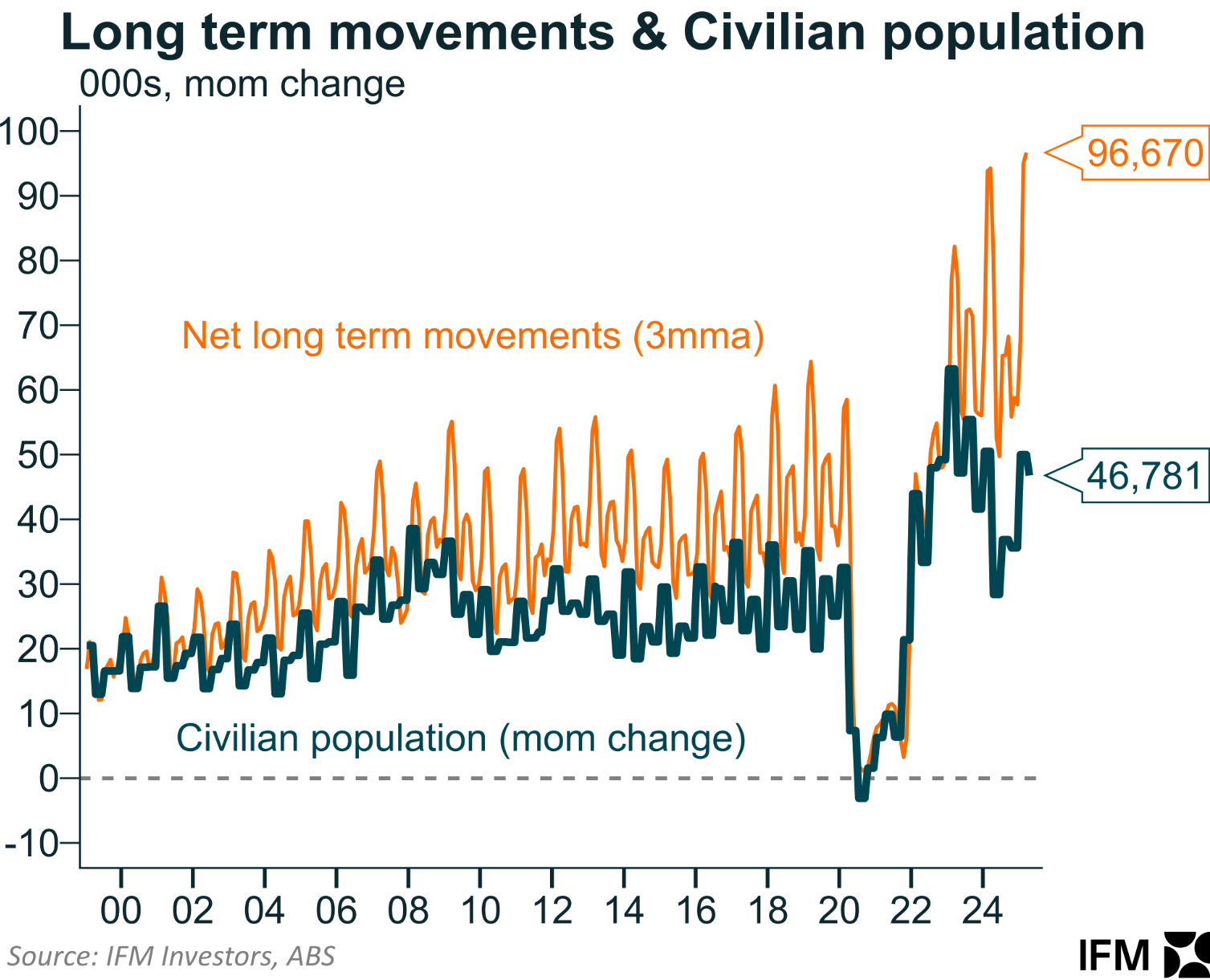
As a result, the March federal budget’s net overseas migration forecasts look unrealistic.
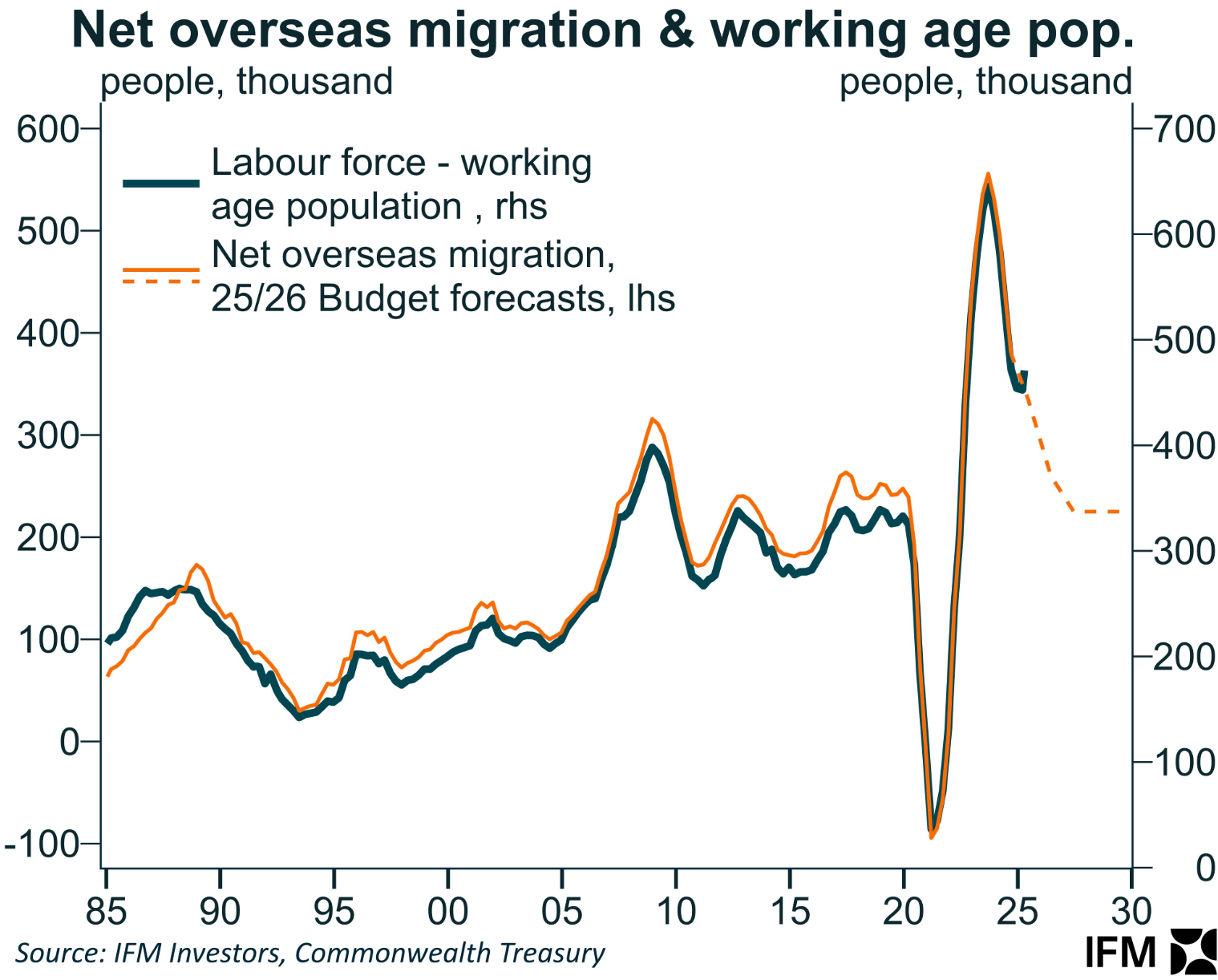
Labor is incentivised to run a high immigration policy:
Labor is incentivised to maintain a high immigration policy given that Indians, who are Australia’s largest migrant source, tend to vote for Labor.
A post-2022 election survey by the Carnegie Endowment showed that 58% of Indian Australians voted for Labor versus 34% for the Coalition.
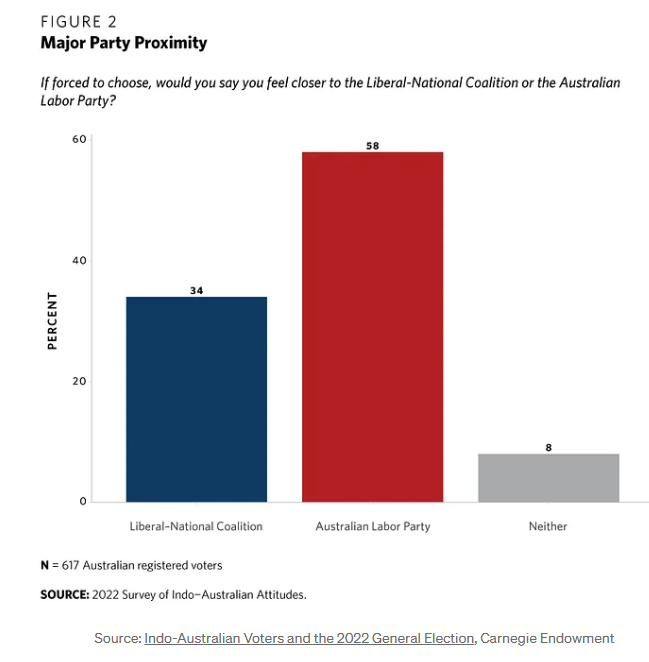
Indian students and migration agents celebrated Labor’s federal election victory because they know that the Albanese Labor government is a soft touch on immigration.
Therefore, don’t expect the re-elected Albanese government to run a moderate, sensible immigration program, as it is against its political interests.
As Gurner noted, high immigration is disastrous for Australia’s rental crisis.
I discussed these issues in this week’s Treasury of Common Sense with Luke Grant on Radio 2GB/4BC.

